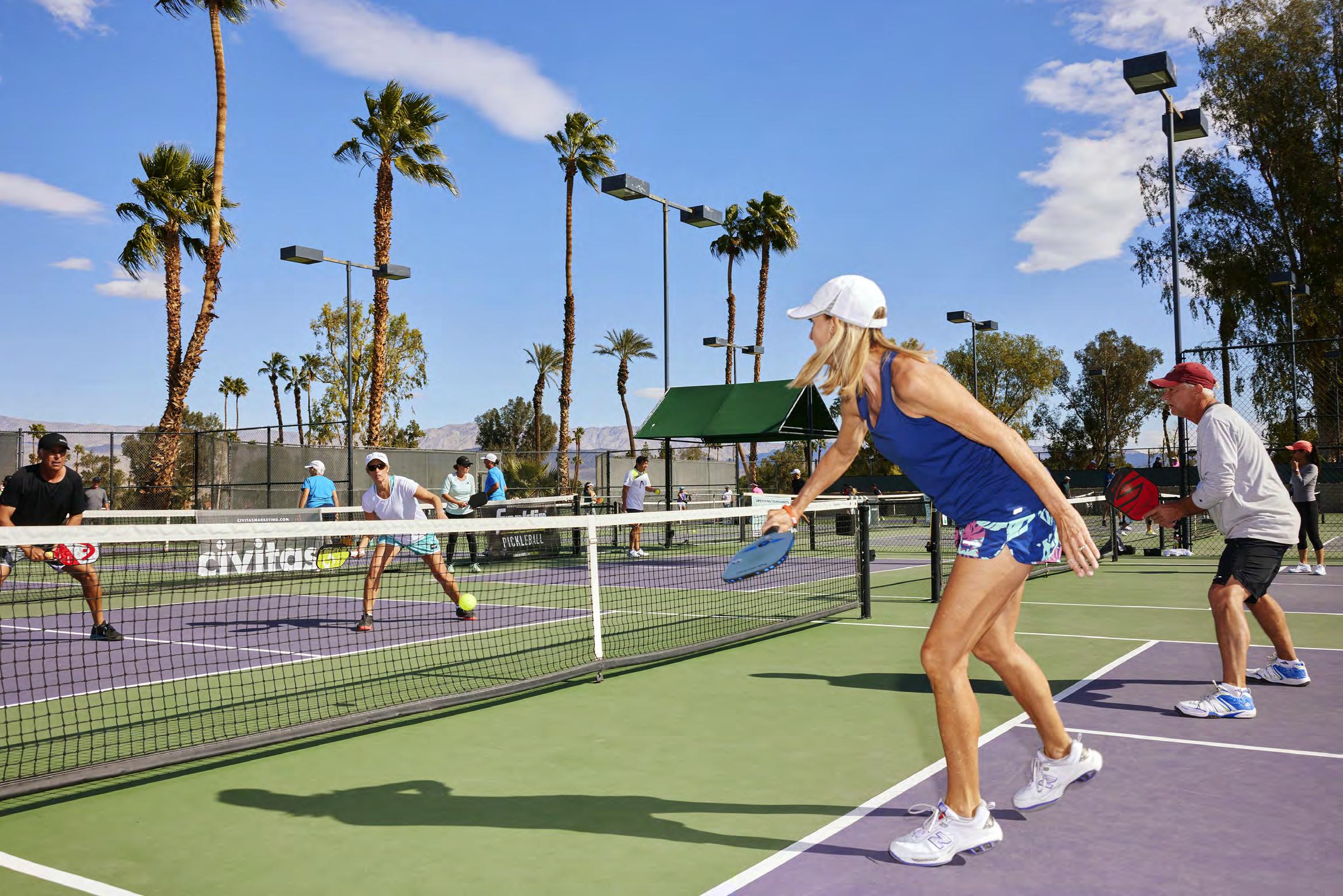
4 minute read
A PASSION FOR PICKLEBALL
by Shaun Tolson
MY UNCLE John got bitten hard by the pickleball bug eight years ago. After being introduced to the sport in Florida in 2014, he came home to Massachusetts and immediately sought out courts nearby. He plays every day—often twice a day—and he talks about his favorite pastime with childlike exuberance.
After years of listening to him extol the virtues of pickleball, I decided to see what all the fuss was about.
I signed up for a lesson with Surya Vinjamuri, a former four-star high school tennis recruit from California who plays on Bryant University’s tennis team.

Vinjamuri, it turns out, is as passionate about pickleball as my uncle. He starts my lesson by demonstrating the proper universal grip on the paddle, the foundation for hitting both forehands and backhands. I had expected a miniature version of tennis, but I quickly realize that pickleball is unique. It’s faster than tennis and less about big setups. It’s also far more approachable.
“It’s a small court, small box, small coverage, and easy rules,” Vinjamuri says. Each side of the court measures only 20 feet wide by 22 feet long. The paddles are compact and easy to wield. The ball is made of plastic and is perforated, which limits how fast it can travel. And serves are hit underhand, which makes them easy for novice players to master.
In just a few minutes, Vinjamuri and I have gone from hitting shots from the far ends of our respective “kitchens”—non-volley zones at the front of the court that extend seven feet from the net—to standing at our baselines, volleying shots for as long as we can.
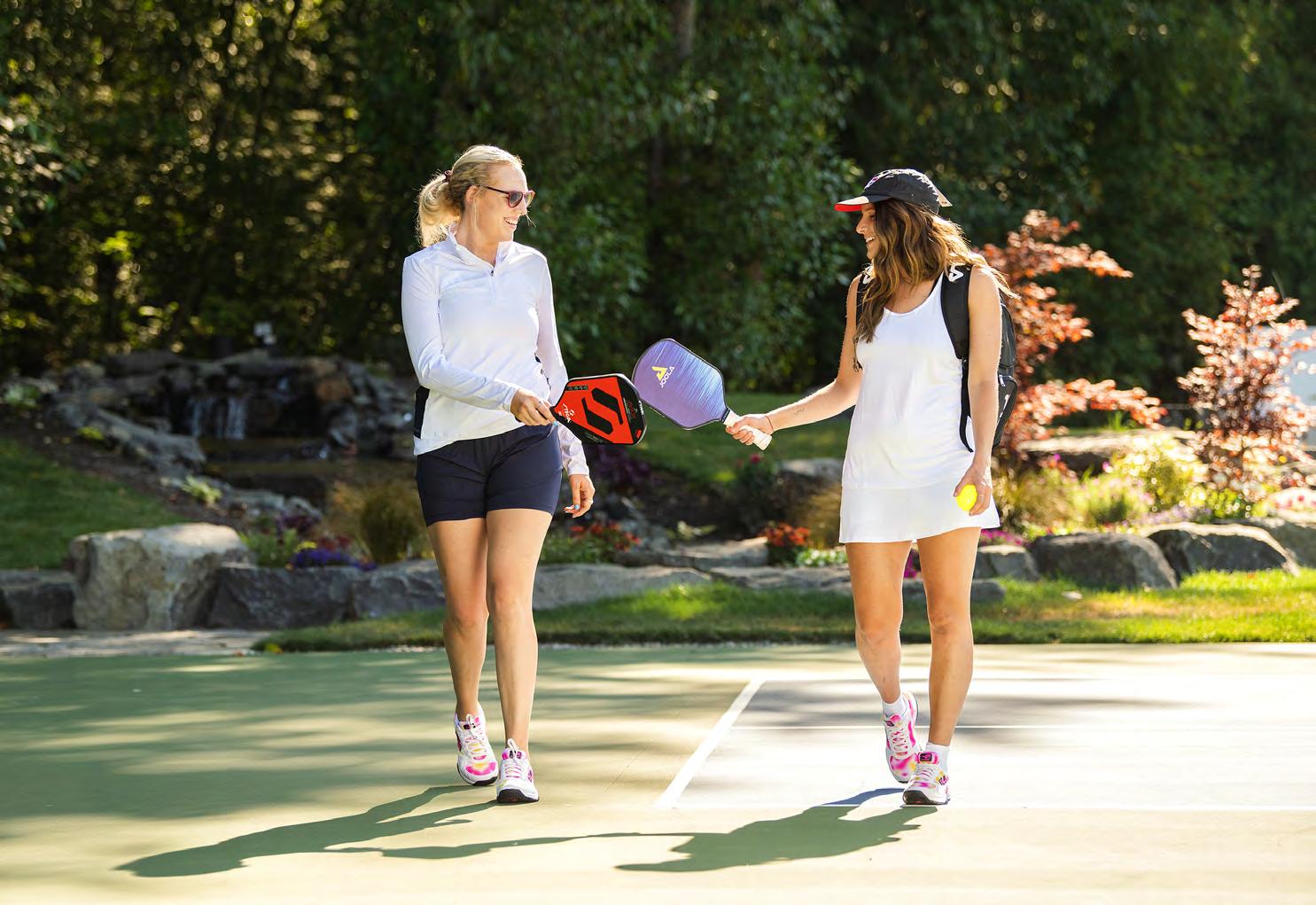
“In two to three weeks, beginners can learn how to play. They can even be ready to join leagues,” says Vinjamuri, who aspires to play pickleball professionally.
Soon I understand why pickleball has throngs of devotees. About 30 minutes into my lesson, I start to feel confident, so I ask him to demonstrate his normal serve. Suddenly the ball streaks into my quadrant. I manage to volley, but that sets Vinjamuri up for a powerful return that comes directly at me, leaving me frozen and unsure whether to react with a backhand or a forehand. It’s clear that playing pickleball at an elite level involves power and speed.
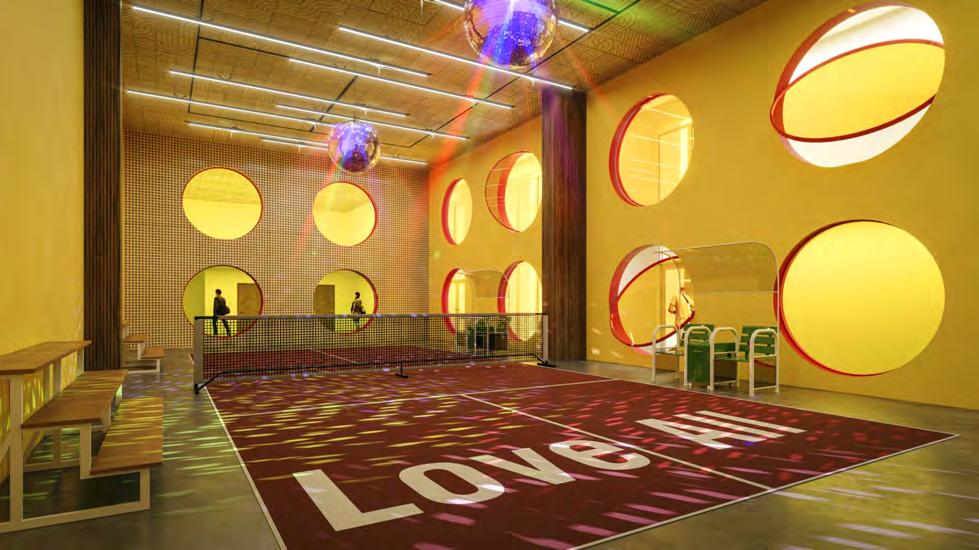
Fortunately, that’s no problem for the majority of “picklers,” who simply want to enjoy the social, exercise, and fun aspects of the sport. More fans join their ranks every year.
Meteoric Growth
According to a 2022 report released by the Sports & Fitness Industry Association, pickleball grew in popularity by 14.8 percent in 2021, bringing the total number of players in the U.S. to 4.8 million. In 2020, the sport’s popularity rose even more—by 21.3 percent.
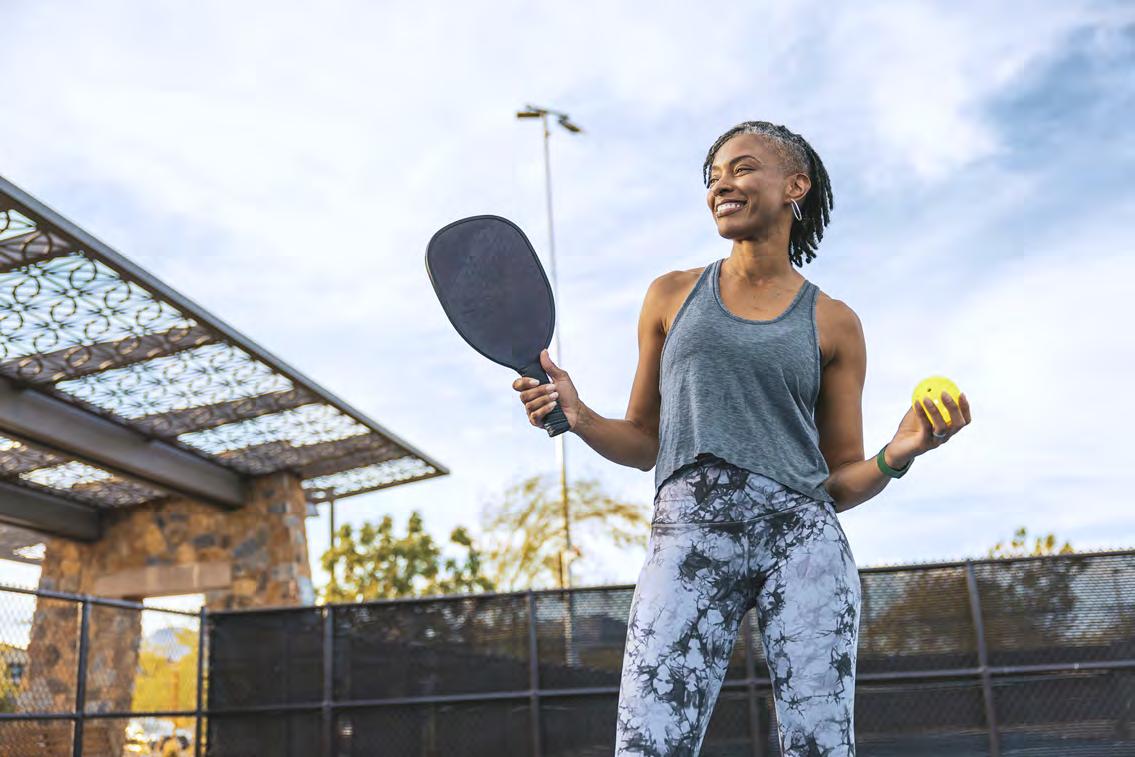
“The secret sauce to the sport is simple really: It’s inherently fun,” says Chuck Menke, chief marketing officer for USA Pickleball, the sport’s governing body. “People constantly use the terms ‘obsessed’ and ‘addicted’ to reference their love for this sport, and that’s a huge part of the reason it’s the fastest-growing sport in the country.”
Another factor Menke cites is a growing network of USA Pickleball ambassadors who have attended city council meetings and approached school boards since the organization was founded in 2005. They’ve spent more than a decade and a half advocating for the sport and urging HOAs, YMCAs, and public parks to install courts. “Three new pickleball facilities are opening every day with an average of four courts at each facility,” says Menke. “Without these facilities, the sport’s meteoric rise wouldn’t be possible.”

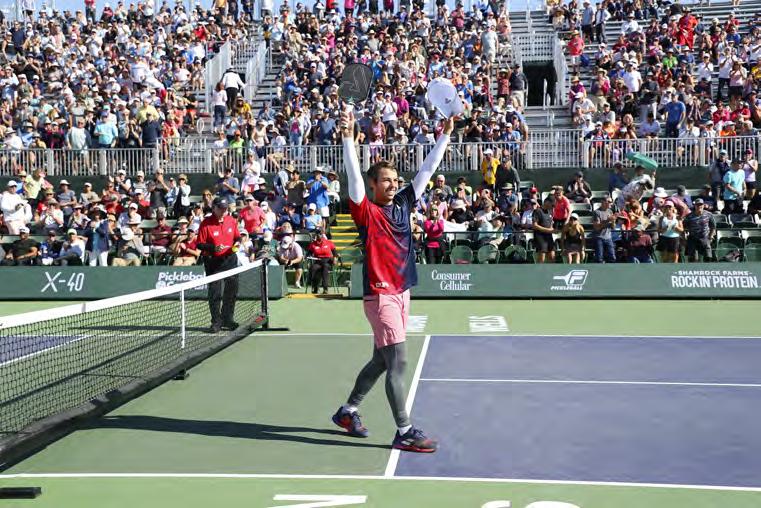

While record numbers of people have discovered pickleball in the past decade, the game actually dates from 1965, when three enterprising fathers living in the same neighborhood on Bainbridge Island just west of Seattle created a backyard game to keep their kids entertained during the summer. Many of the quirky rules—underhand serves and penalties for volleying while standing in the kitchen—reflect the inventors’ original goal: to create a game kids and adults could enjoy together. “There aren’t many sports where grandparents can play with their grandkids,” Menke points out.
Social Sport
Pickleball’s surging popularity has gone so far as to inspire career shifts. Eric Ho, for example, earned his certification as a pickleball instructor in November 2021. Last March, he decided to leave an 11-year career in finance to teach the sport full-time. He also launched the website nycpickleball.com to help enthusiasts in the New York City area find venues where they can play.
Ho discovered pickleball in 2006 as part of his high school’s physical education curriculum. He and his classmates played for a month—and loved it—but the sport soon faded into obscurity. Fast-forward 14 years: As the pandemic set in, Ho and his wife ducked into a sporting goods store in New York looking for a Frisbee or a football they could throw around outside for entertainment. Alas, the store was going out of business and had only baseball equipment, ice skates, and pickleball equipment left in stock. Ho bought the paddles and balls. The rest, as they say, is history.
What struck Ho profoundly as he rediscovered the sport was the fast lane to improvement. “If you put in a little bit of work, you can get up the curve relatively quickly,” he says. “Now I can play at the highest level of amateur tournaments, and that’s just with a little bit of time and dedication.”

Jeremy Baldwin made a similar discovery during a golf trip to South Carolina in 2021. He and his buddies decided to rent pickleball paddles and spend their nongolfing days on one of the resort’s courts.
“Once we picked up the rules and figured out how the games are run and how the points are scored, we just fell in love with it,” says Baldwin. He started taking lessons with Ho and now plays in tournaments. His goal is to reach the professional ranks and advance enough to play the sport for a living someday. For now, though, the 28-year-old loves the social opportunities pickleball provides and the community he plays and practices with—a collective of diverse ages, from recent college grads in their early 20s to enthusiasts in their mid-40s.
“Pickleball is such a magically social sport,” says Ho. “They hit some magical ratio that really opens up the game to as many people as possible.”
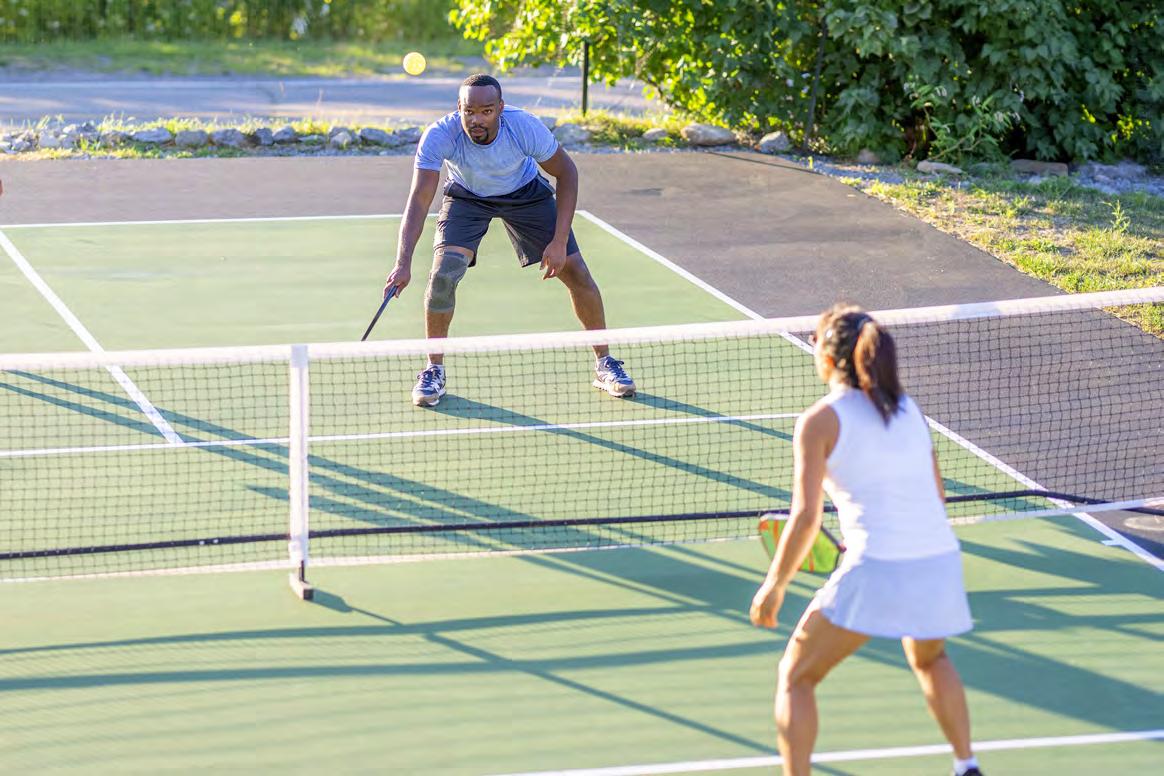

by Jeanne O’Brien Coffey










